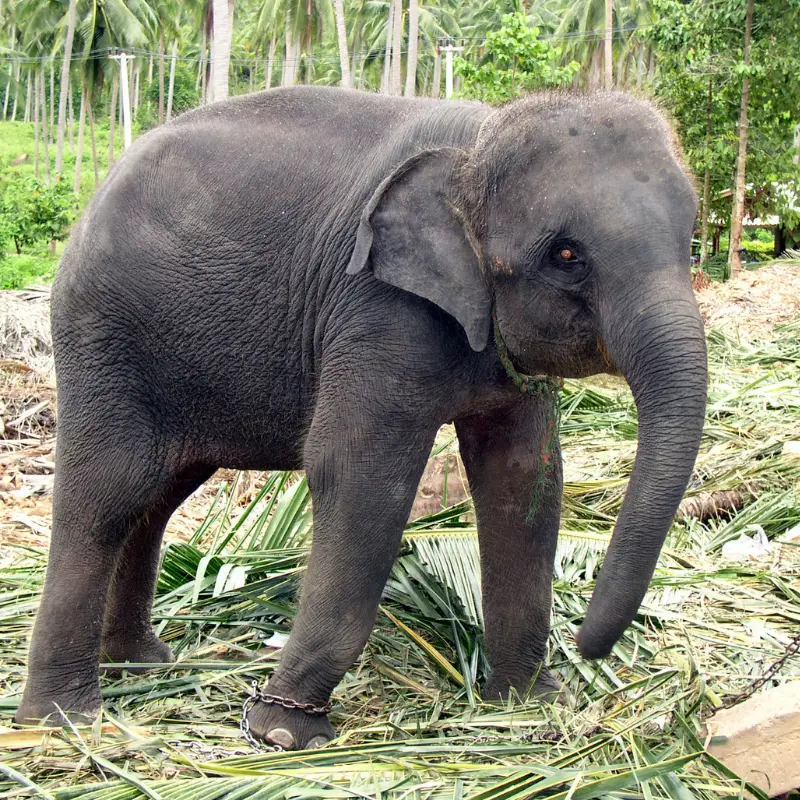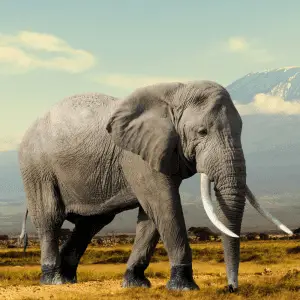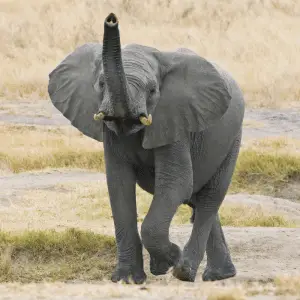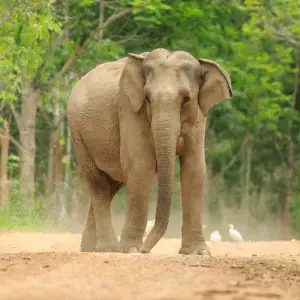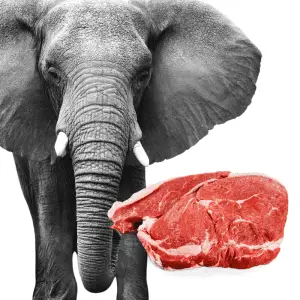Yes, all species of elephants have hair on their bodies. Even though the hair is not as thick to form fur on their body, you can see the spaced-out hair standing on their heads.
All mammals have hair on their bodies, no matter how small the amount is. Unlike most mammals, the amount of hair elephants have on their body is less.
Why Do Elephants Have Hair on Their Heads?
As we have already explained, elephants have body hairs like other mammals.
The hair you can see on an elephant’s head helps them regulate its body temperature. In most cases, the mammals’ body hair helps them keep warm during the cold weather. However, elephants generally live in naturally warm places. That is why they do not require body hair to keep themselves warm during cold weather. However, these parts of the hair that you can see on elephants’ bodies help them regulate their temperature in other ways.
The hair of an elephant helps them carry body heat away from its skin and pass it into the air.
The hair of mammals works just like an insulator that covers their skin. Although in the case of elephants, the sparse body hair brings the opposite effect.
Location
Elephants have wiry, small hair spaced out mainly across the back and head of the elephant. The tail of an elephant also has hair but is a lot thicker than the body. Asian elephants have hair on the front of their legs.
What does the elephant hair feel like to touch?
The hair is exceptionally coarse to the touch and feels like bristles or wire.
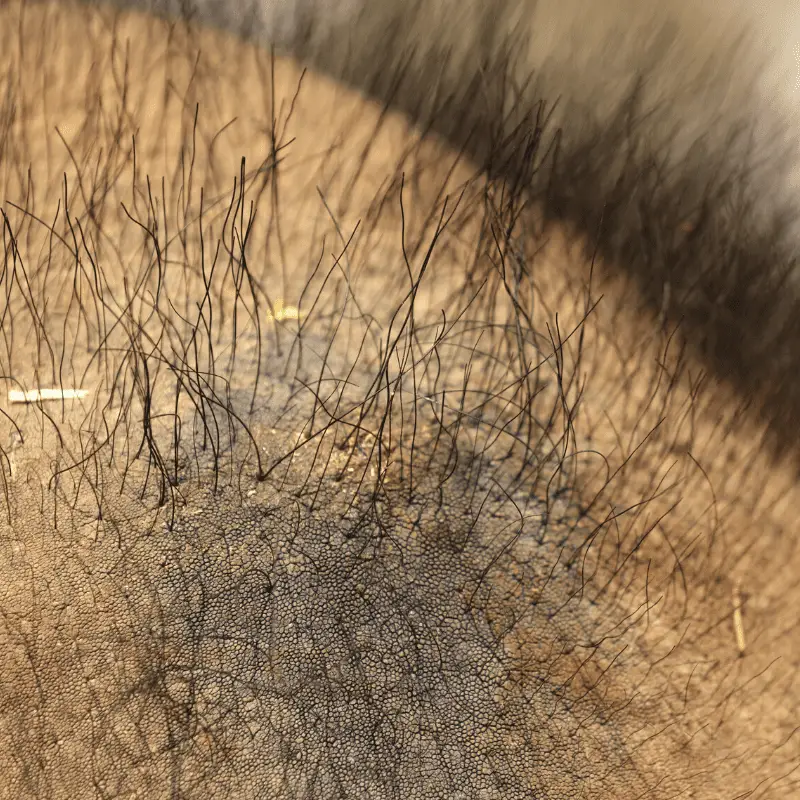
Importance of Elephant Hair
Hair plays an essential role in the health of an elephant. The hair helps an elephant lose heat during the day. It also helps to protect the elephant’s skin from insects.
Even though there are many other ways an elephant can regulate their massive body temperature, none is as effective as body hair.
Scientists have noticed that the ability to lose heat through body hair is enhanced by 23% if a light breeze blows.
How long is the hair on an elephant?
The length and the width of the elephant hair depend on the body part where the hair is. Such as, on an elephant’s tail, the hair can reach up to a metre long, whereas on top of the head and back, they are a lot shorter.
Elephants have a hair density of 1.5k hairs per square meter on their bodies. We have a density of 2 million hairs per square meter on our bodies. As you can see, the number of hairs elephants have is significantly lower.
Hairy Tails
Elephants have a lot more hair on their tails. The hair found on an elephant’s tail is very thick and coarse. Some of the hairs can get very long. One of the main reasons for an elephant’s hairy tail is to slap and flap away bugs, such as flies.
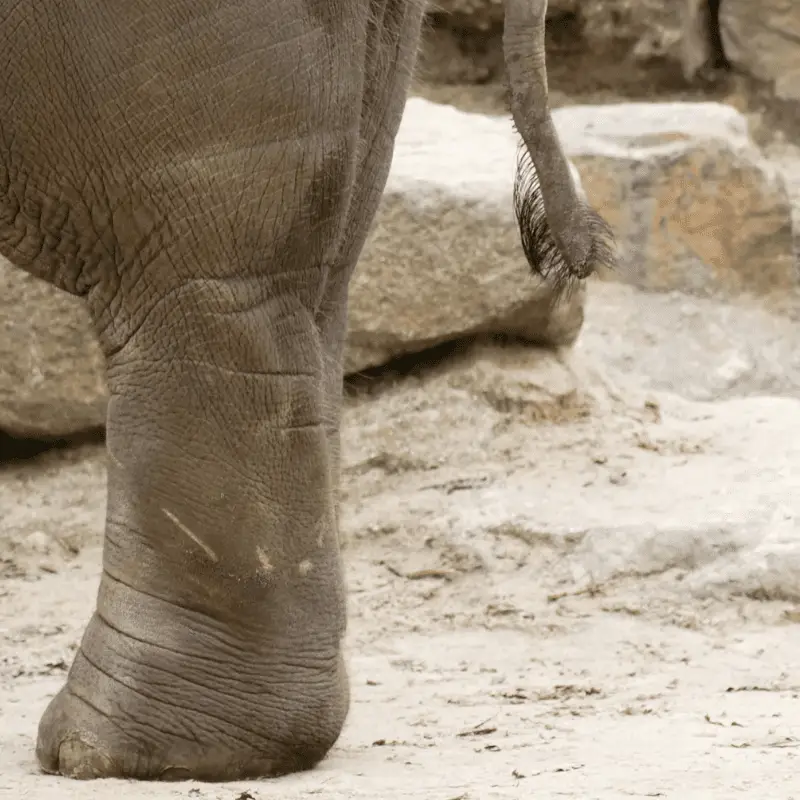
African Elephants vs Asian Elephants
The amount of hair elephants have on their body varies depending on their species.
Why do Asian Elephants have more hair than African Elephants?
Asian elephants have more hair than African elephants. This is because Asian elephants are more closely related to Woolly mammoths. The Woolly mammoth is now extinct. It was a large mammal full of fur, hence the name woolly.
Baby Elephants
Younger elephants tend to have more hair on their body than their elders.
What Helps Elephants to Stay Cool?
Apart from using their body hair to disperse heat, elephants often showcase several behaviours that help keep their body temperature in control.
Ears
Flapping their big ears is one of the behaviours that help elephants keep their body temperature in check.
The ears’ surface area helps the elephants disperse the heat through the skin. Unlike humans, elephants do not sweat. That is why they must use various methods to keep their body heat under control.
Most mammals cannot use the flapping ear technique to reduce their body heat as their ear is not specially designed for this purpose.
The elephants’ ears contain a vast network of blood vessels that helps them to disperse extra body heat.
Bathing
Bathing is yet another way the elephants often use to keep that body heat under control. It allows moisture to evaporate off the skin, which helps the animals reduce their temperature.
During elephants’ bath and swim time, you will notice that they love to spray mud or water on their bodies. The elephants take a dip underwater to bring a refreshing change and a cool down whenever possible.
Recommended read: Can An Elephant Swim?
Even though springing mud on their bodies may not look very appealing, it solves problems. Unlike water, mud tends to stick to the skin of these animals and protect it from the sun’s harsh rays. It also helps to create a thick crust that can help the elephants to avoid insect bites.
Body Temp Control Ability
Elephants will often be seen in the wild, gathering under trees in the shade. By doing this, the elephants keep out of the direct Sun, thus not raising their body temperature.
The elephants’ natural habitat is in the tropics, so they do not need to warm their bodies. Instead, the elephants need to keep their body heat down not to overheat and get dehydrated.
Elephants in zoos or colder countries, where the temperature significantly drops below the normal range of their natural habitat, then elephants will need to control their body temperature to stay warm.
In zoos, particular heated indoor areas are needed to keep the elephants healthy during cold days.
The elephants, which do not get this facility, restrict their blood flow with the help of highly efficient blood vessels.

